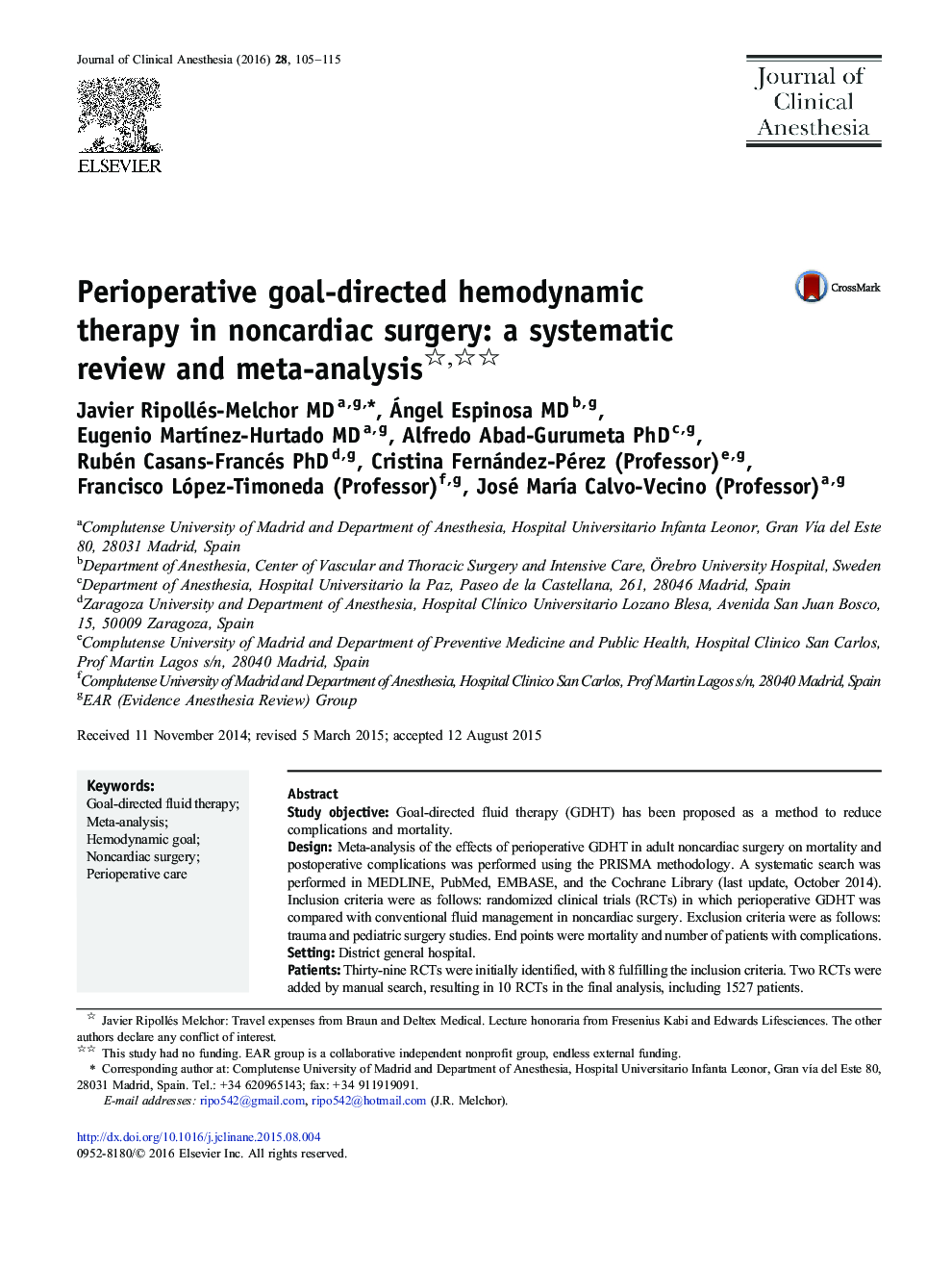| Article ID | Journal | Published Year | Pages | File Type |
|---|---|---|---|---|
| 2762379 | Journal of Clinical Anesthesia | 2016 | 11 Pages |
•Up to 4% of patients undergoing noncardiac surgery may die, and another significant part will develop postoperative complications.•Goal-directed hemodynamic therapy is a term that describes a potentially effective method for determining the optimal dose of fluid therapy, inotropes and vasopressors through the use of a clinical algorithm to optimize cardiac output and oxygen delivery to the tissues, preventing situations of hypoperfusion and fluid overload.•The adoption of perioperative goal-directed hemodynamic therapy protocols could reduce postoperative mortality.•There is a lack of studies analyzing goal-directed hemodynamic therapy in the postoperative period.
Study objectiveGoal-directed fluid therapy (GDHT) has been proposed as a method to reduce complications and mortality.DesignMeta-analysis of the effects of perioperative GDHT in adult noncardiac surgery on mortality and postoperative complications was performed using the PRISMA methodology. A systematic search was performed in MEDLINE, PubMed, EMBASE, and the Cochrane Library (last update, October 2014). Inclusion criteria were as follows: randomized clinical trials (RCTs) in which perioperative GDHT was compared with conventional fluid management in noncardiac surgery. Exclusion criteria were as follows: trauma and pediatric surgery studies. End points were mortality and number of patients with complications.SettingDistrict general hospital.PatientsThirty-nine RCTs were initially identified, with 8 fulfilling the inclusion criteria. Two RCTs were added by manual search, resulting in 10 RCTs in the final analysis, including 1527 patients.MeasurementsThose studies that fulfilled the entry criteria were examined in full and subjected to quantifiable analysis, predefined subgroup analysis (stratified by supraphysiological or physiological hemodynamic goal and by time the intervention was carried out, perioperative or postoperative), and predefined sensitivity analysis.Main ResultsA significant reduction was observed in mortality associated with GDHT compared with conventional fluid therapy (risk ratio, 0.63; 95% confidence interval, 0.42-0.94; P = .02). However, no differences were found in the number of patients with complications (risk ratio, 0.75; 95% confidence interval, 0.50-1.17; P = .21), and the sensitivity analysis did not confirm the results.ConclusionsThis meta-analysis, with its limitations, shows that the use of perioperative GDHT may reduce postoperative mortality, but it is unable to show a reduction in the number of patients with complications.
